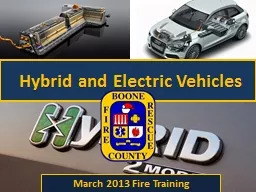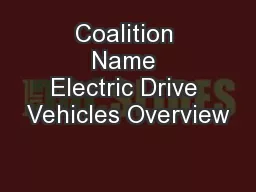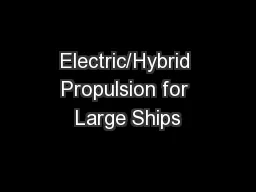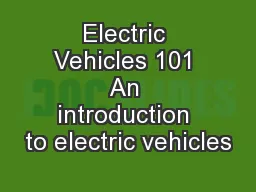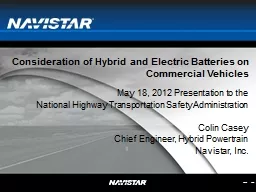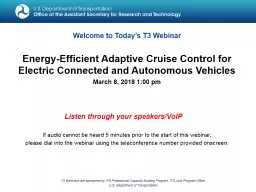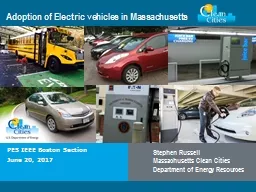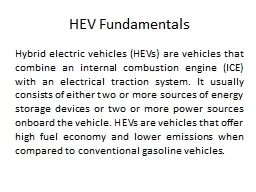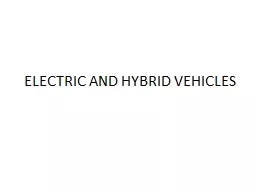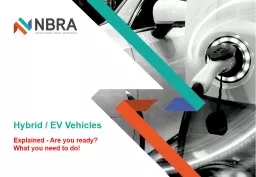PPT-Hybrid and Electric Vehicles
Author : mitsue-stanley | Published Date : 2016-05-08
March 2013 Fire Training What is the difference between a hybrid vehicle and an electric vehicle What are some potential risks associated with hybrid and electric
Presentation Embed Code
Download Presentation
Download Presentation The PPT/PDF document "Hybrid and Electric Vehicles" is the property of its rightful owner. Permission is granted to download and print the materials on this website for personal, non-commercial use only, and to display it on your personal computer provided you do not modify the materials and that you retain all copyright notices contained in the materials. By downloading content from our website, you accept the terms of this agreement.
Hybrid and Electric Vehicles: Transcript
Download Rules Of Document
"Hybrid and Electric Vehicles"The content belongs to its owner. You may download and print it for personal use, without modification, and keep all copyright notices. By downloading, you agree to these terms.
Related Documents

